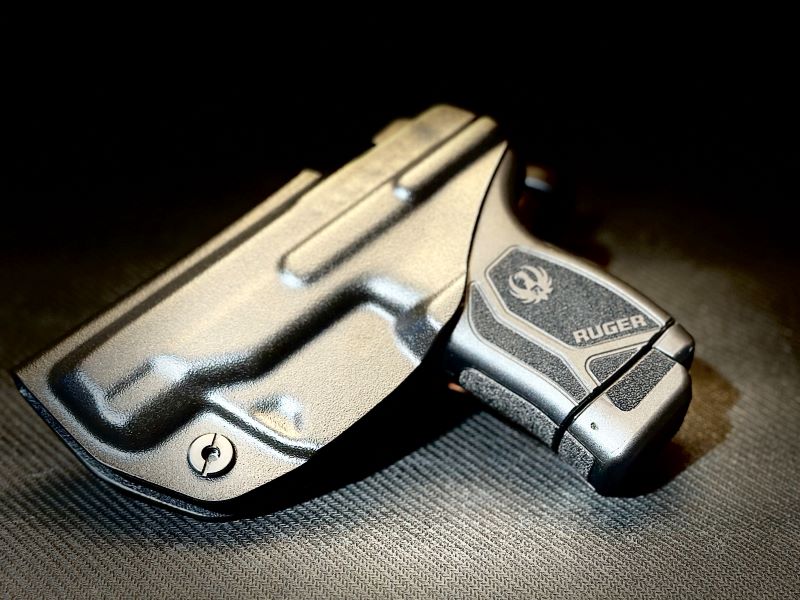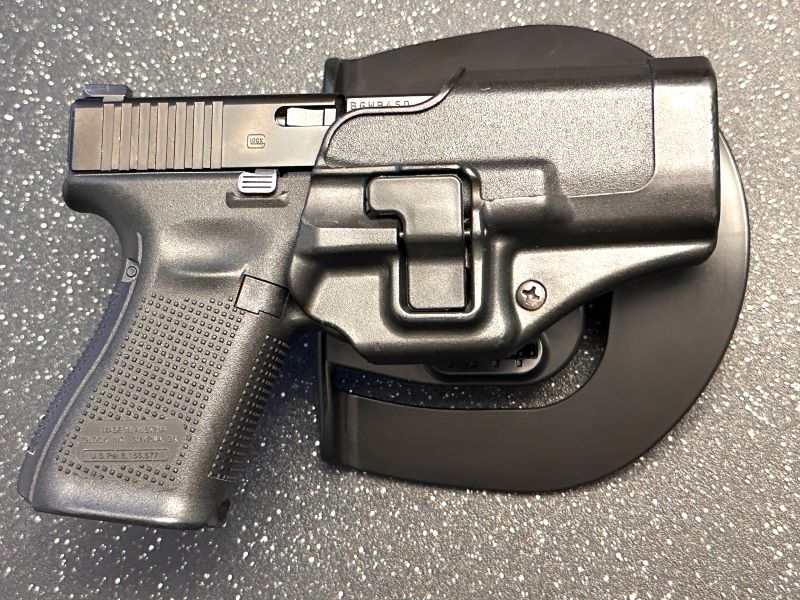How do you carry your favorite handgun? Carrying a concealed weapon is more popular than ever because people like peace of mind knowing they can protect themselves should something terrible happen. Selecting the right handgun is a chore because there are so many options. Every gun company on the planet has supplied us with an endless assortment of handguns to select from.
And for every handgun made, there are 25 holsters designed to carry that gun. Inside the waist, outside the waist, in the small of the back, shoulder, cross draw, and more. Finding the right holster is no simple task, and one thing you should consider when selecting a holster is retention.

Carrying a gun is a big responsibility. When a gun is spotted in public it can bring a lot of attention as well. So, the last thing you want is for your gun to fall out on the ground in front of a bunch of people. Embarrassing as that would be, it also causes safety issues. Let’s discuss retention types and levels for holsters.
What is retention type on a holster?
Retention is basically some type of mechanism that keeps the gun in the holster. There are multiple different types of retention, but they can be broken down into two main categories: passive retention and active retention. Passive retention is a holster that has been designed to put some type of retention on the gun by the way it was designed.
The first holster I was issued after graduating from the police academy was a leather holster that had two levels of retention. One was passive and required me to “twist” the handle of the gun towards my body as I drew it. The second was an active retention in the form of a leather snap that went around the side of the holster.

Active retention is a mechanical addition to the holster that locks the gun in place. This could be a thumb break, a rotating cover, or a finger/thumb lock. Most leather holsters use a thumb break which is a piece of leather that goes over the gun (normally at the top) and snaps onto the other side of the holster. As you draw, your thumb pushes on a leather tab, breaking the snap loose. Other types of holsters have finger/thumb locks which is a lever that must be pushed in or moved to the side before the gun can be drawn.
What are the retention levels on a holster?
Most holsters with retention will be rated as level I-III. This means that a level I retention holster has one type of retention. A level three retention holster has three types of locking devices.
For example, the Safariland ALS/SLS Duty Holster has three locking features. One is passive in the form of a retention screw against the trigger guard. The other two are active with one being a locking lever and the other a rotating hood/strap over the top of the gun. This means to draw the gun you must push down on the hood lever and rotate it forward, then pull back on a second lever with your thumb which releases the gun. This sounds like a lot of steps, but it can be done quickly.
Level III is the most common type of holster for uniformed law enforcement. Outside the waistband holsters (OWB) typically have more locking features or locking levels because the gun is more visible and easier for someone to reach for. There are plenty of OWB holsters that have only one or two levels of retention.
A popular holster carried by non-uniformed law enforcement at my agency is the Black Hawk CQC Serpa holster. This is a level II holster that comes with a belt attachment and a paddle attachment. This holster has a passive retention screw and an active manual index finger lock. When you grip the gun, your finger naturally falls to the locking lever just below the top of the holster. You push in on this lever as you draw the gun from the holster.

What type and level of retention should you choose?
This will depend first on the type of holster you want to use. IWB holsters typically have one or two levels of retention. I prefer level I retention for IWB. I adjust the retention screw, so the gun is snug enough to stay in when held upside down. This requires a deliberate pull to draw the weapon.
For OWB holsters, I like level II holsters for everyday carry. I tend to carry an OWB holster more in the winter because my jacket covers up the gun. A level III holster is ideal for duty carry if you work in law enforcement, security, etc. They also work great for tactical/combat setups for those putting together a survival rig. Level three is not a lot harder to draw than level two, but the holsters tend to be more of a full-size duty holster.

Ready to level up?
If you carry a gun, you should have a holster with some type of retention on it. This is especially true for outside waistband holsters. Some people like to use soft IWB holsters, and that’s fine if you feel comfortable — the gun is snug enough that it will not fall out. I still prefer level one retention at a minimum on any holster for peace of mind.
You don’t want the wrong person getting ahold of your gun should something go wrong. Having it fall out in the middle of a store, parking lot, or anywhere else in public, is something you do not want to live through. There are lots of options for holsters so pick one that works for you, just make sure it has some type of retention.


